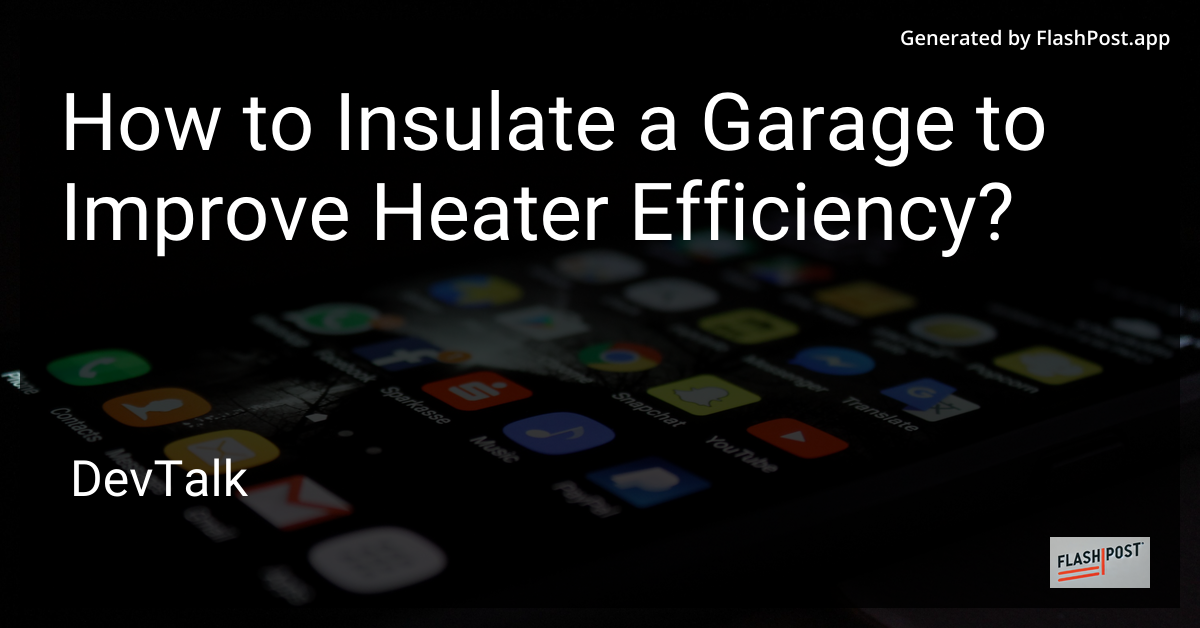How to Insulate a Garage to Improve Heater Efficiency?
 # How to Insulate a Garage to Improve Heater Efficiency
# How to Insulate a Garage to Improve Heater Efficiency
As the mercury drops, maintaining a warm and comfortable garage becomes a priority for many homeowners.
Insulating your garage can significantly enhance your heater's efficiency, allowing you to save on energy costs and keep the space cozy. This guide will walk you through the essential steps to effectively insulate your garage.
Why Insulate Your Garage?
Garages are typically less insulated than other parts of a home, which can lead to heat loss and inefficient energy use. By insulating your garage, you can:
- Reduce heat loss and lower heating bills.
- Protect belongings and vehicles from cold damage.
- Expand your usable living space by making the garage more comfortable.
Steps to Insulate Your Garage
1. Choose the Right Insulation Material
The first step in insulating your garage is selecting the appropriate insulation material. Here are a few options:
- Fiberglass Insulation: Affordable and easy to install, fiberglass is excellent for walls and ceilings.
- Rigid Foam Insulation: Offers a high R-value for increased energy efficiency and works well in garage doors.
- Spray Foam Insulation: Provides excellent coverage, including small crevices, but can be more expensive.
2. Insulate the Walls
- Prepare the Walls: Remove any drywall and inspect the walls for cracks or holes. Seal them with caulk or foam sealant.
- Install Insulation: Place your chosen insulation between the wall studs. Ensure it fits snugly to prevent air gaps.
- Cover the Insulation: Install drywall or another wall covering to protect the insulation.
3. Insulate the Garage Door
- Clean the Door: Wipe down the door to remove dust and debris.
- Apply Insulation Panels: Attach rigid foam insulation panels or a garage door insulation kit to the door sections.
- Seal Gaps: Use weatherstripping to seal any gaps around the door edges.
4. Seal Windows and Doors
- Inspect for Drafts: Check for drafts around windows and doors.
- Apply Weatherstripping: Use weatherstripping or caulk to seal gaps and prevent heat loss.
5. Insulate the Ceiling
- Check for Gaps: Inspect the ceiling for any openings and seal them.
- Install Insulation: Add fiberglass batts or spray foam insulation to the ceiling, especially if you have living space above the garage.
6. Consider Additional Measures
- Floor Insulation: Although less common, insulating the garage floor with foam board or insulation mats can further improve efficiency.
- Ventilation: Ensure good ventilation to prevent moisture buildup that can damage insulation.
Conclusion
Properly insulating your garage is a worthwhile investment that enhances heater efficiency and comfort. By following these steps, you can transform your chilly garage into a warm, energy-efficient space.
For more tips on staying warm in your outdoor spaces, check out our guide on patio heater safety. If you're considering an outdoor heating solution, explore our discussion on patio heaters or browse the latest electric outdoor heater deals.
By following this guide, you not only improve the efficiency of your heating setup but also contribute to a more sustainable and cost-effective household.